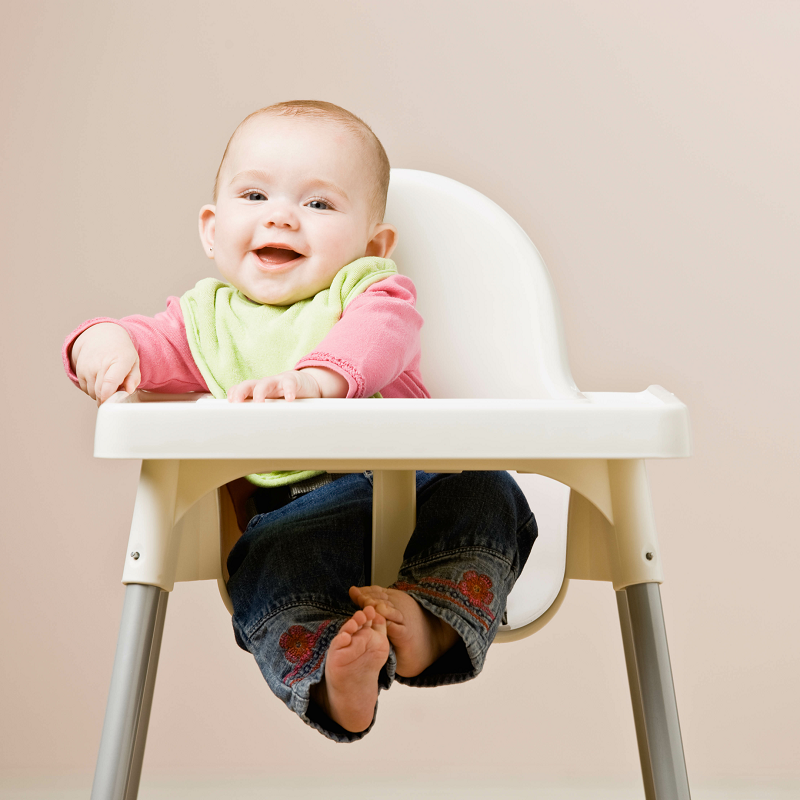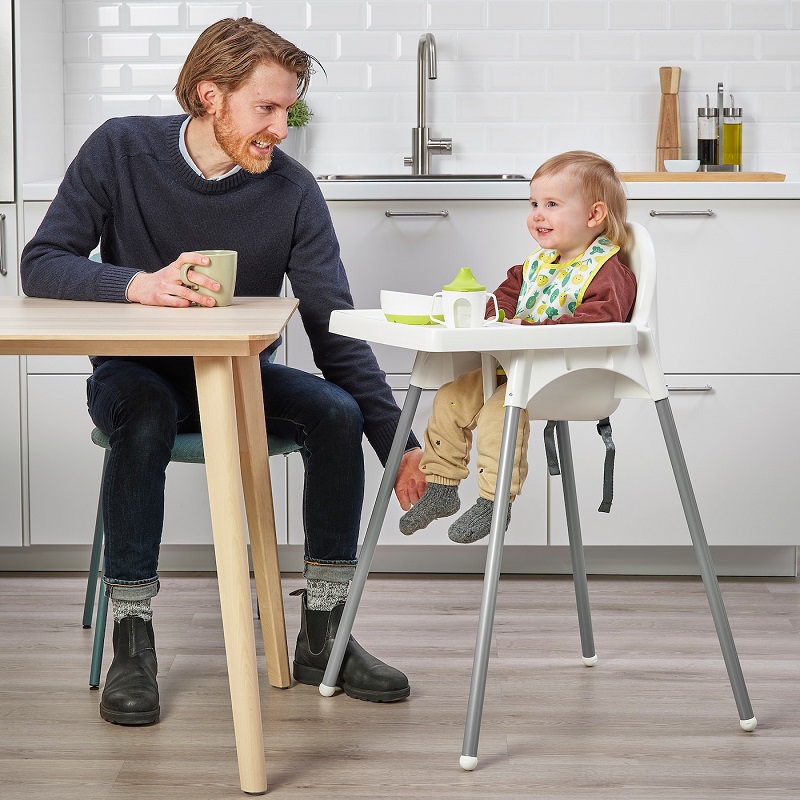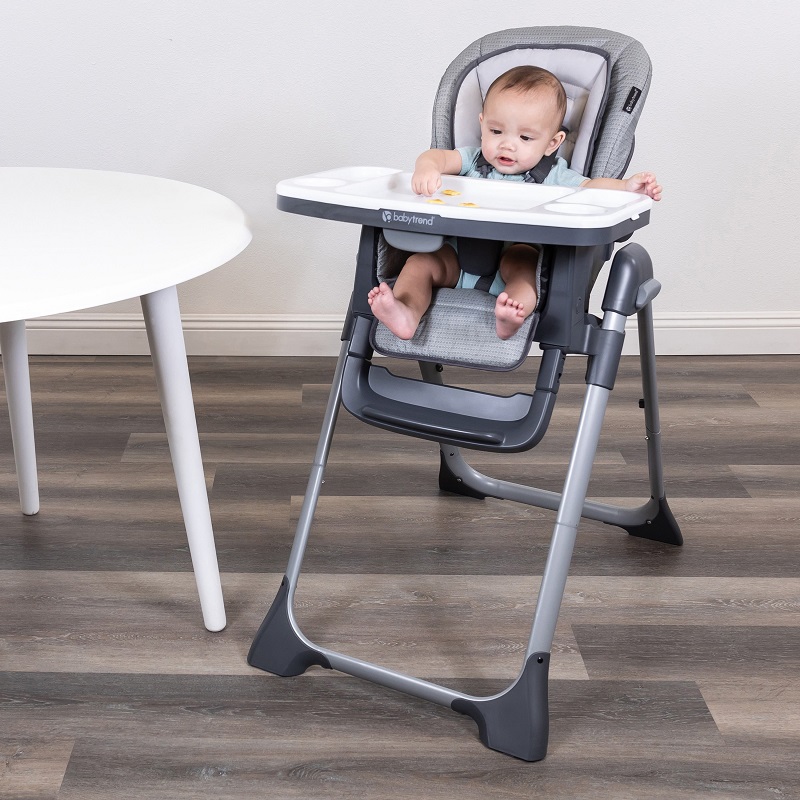Understanding High Chair Readiness
The Importance of Developmental Milestones
When considering when a baby can sit in a high chair, it’s crucial to understand the developmental milestones that signal readiness. Babies develop at different rates, but general guidelines help parents determine the right time to introduce a high chair. Typically, babies are ready to sit in a high chair around six months of age, although some may be ready slightly earlier or later. At this age, babies usually have enough neck and head control to sit upright and have begun eating solid foods, which are essential for high chair use.
During the first few months of life, a baby’s muscles and motor skills are still developing. They need to be able to sit with minimal support and have the ability to hold their head up steadily. By six months, many babies have developed the necessary muscle strength and coordination to sit in a high chair safely. However, each baby is unique, and parents should observe their child’s individual progress and consult with pediatricians to ensure that they are developmentally ready for this transition.
Signs of Physical and Cognitive Readiness
In addition to physical readiness, cognitive development plays a role in a baby’s suitability for a high chair. At around six months, babies show interest in their surroundings and the foods their caregivers are eating. This curiosity indicates that they are ready to participate in mealtime activities and can benefit from sitting in a high chair. Cognitive signs include the ability to follow simple visual cues and the emerging skill of self-feeding.
Babies should also be able to sit up straight and have good head and neck control. If a baby is still slouching or has difficulty holding their head upright, it might be wise to wait until they show improved muscle control. Proper head and neck stability are crucial for safety in a high chair, as they help prevent the baby from leaning forward or tipping over.

Choosing the Right High Chair
Safety Features to Consider
Selecting a high chair involves evaluating various safety features to ensure your baby’s well-being. Look for a high chair with a sturdy base to prevent tipping and a safety harness to secure your baby. A five-point harness is often recommended, as it provides better security than a three-point harness. Ensure that the high chair complies with safety standards set by regulatory bodies to avoid potential hazards.
A high chair should also have a stable and wide base to prevent it from tipping over, especially as your baby becomes more active. Additionally, a tray that locks securely into place and is easy to clean is essential for convenience and safety. When testing a high chair, make sure it has no sharp edges or small parts that could pose choking hazards.
Comfort and Adjustability
Comfort is another key consideration when choosing a high chair. Look for a high chair with a padded seat and backrest that provides adequate support. An adjustable seat and footrest can accommodate your baby’s growth and ensure they remain comfortable during mealtime. Some high chairs offer reclining features, which can be useful for younger babies who may not yet be able to sit upright for extended periods.
Adjustability in the height of the chair is also important. It allows you to position the high chair at the appropriate level relative to your dining table, making mealtime more convenient for both you and your baby. A high chair that grows with your child can offer extended use and value, adapting to their changing needs as they grow.
Introducing Your Baby to the High Chair
Gradual Introduction and Adaptation
When introducing your baby to the high chair, a gradual approach can help them adapt to this new experience. Start by placing the high chair in a familiar and comfortable environment, such as your dining area, and allow your baby to explore it while it is not in use. Let them sit in the chair for short periods to get accustomed to the new seat.
During the initial introductions, keep the experience positive and low-pressure. You might place some of their favorite toys on the tray or offer a small snack to make the chair more appealing. Gradually increase the time your baby spends in the high chair as they become more comfortable. Ensuring a relaxed and positive introduction helps your baby associate the high chair with enjoyable mealtimes.
Ensuring Safety and Comfort
Safety and comfort should be prioritized during the transition to a high chair. Always secure your baby with the safety harness before starting mealtime. Ensure that the tray is properly locked in place and within easy reach of your baby. Check the harness regularly to make sure it remains snug but not too tight, allowing your baby to move comfortably without compromising safety.
Additionally, be attentive to your baby’s cues. If they seem uncomfortable or fussy, it might be helpful to adjust the high chair’s settings or take a break. A well-fitted high chair with proper support can make mealtime more enjoyable for both you and your baby.

Meal Times and High Chair Hygiene
Cleaning and Maintaining the High Chair
Keeping the high chair clean and well-maintained is essential for both safety and hygiene. After each meal, wipe down the tray, seat, and any other surfaces that came into contact with food. Many high chairs come with removable and washable tray covers or seat pads, which can simplify the cleaning process. Follow the manufacturer’s instructions for cleaning and maintenance to ensure the high chair remains in good condition.
Regularly inspect the high chair for any signs of wear or damage. Check for loose screws, frayed harnesses, or any other issues that could affect safety. Address any problems promptly to prevent accidents and ensure the high chair continues to serve its purpose effectively.
Dealing with Spills and Stains
Spills and stains are inevitable during mealtime, so having a plan for managing them is important. Use a damp cloth or sponge to clean up spills immediately to prevent them from setting. For stubborn stains, a mild detergent or baby-safe cleaner can be effective. Avoid using harsh chemicals that could be harmful to your baby.
Consider using a high chair cover or bibs to minimize mess and make cleanup easier. Some high chairs come with washable liners that can be removed and cleaned separately, offering added convenience. Maintaining cleanliness not only ensures a hygienic environment but also helps extend the life of the high chair.
Transitioning from High Chair to Regular Chair
Recognizing the Right Time for Transition
Knowing when to transition your baby from a high chair to a regular chair is important for their development and comfort. Generally, this transition occurs between 18 months and 3 years of age, depending on the child’s growth and readiness. Look for signs that your baby is outgrowing the high chair, such as increased mobility and the ability to sit at a table without needing additional support.
Consider your baby’s size and development when making this transition. If they are able to sit upright, use a regular chair comfortably, and participate in mealtime activities without difficulty, it may be time to start introducing them to a regular chair. Ensure that the chair they will transition to is safe and appropriate for their age and size.

Making the Transition Smooth and Safe
To make the transition from a high chair to a regular chair smooth, introduce the new seating arrangement gradually. Allow your baby to explore the new chair and become familiar with it. If needed, use a booster seat or cushion to help them reach the table comfortably and provide additional support.
Ensure that the regular chair is sturdy and safe for your baby. Use a chair with a stable base and, if necessary, install a safety strap to prevent falls. Monitor your baby’s comfort and safety as they adjust to the new seating arrangement, and make any necessary adjustments to accommodate their needs.
Conclusion
Choosing the right time to introduce a high chair and making the transition smoothly involves careful consideration of your baby’s developmental milestones, the safety and comfort of the high chair, and ongoing maintenance and hygiene. By following these guidelines and paying attention to your baby’s needs and cues, you can ensure a positive and safe mealtime experience.
